Ibn Battuta: North Africa's Marco Polo
Ibn Battuta is perhaps the first name on our lips when asked about Islamic Medieval travel. Swayed by an internal drive to discover the world, he journeyed across 117,000 km, leaving an unparalleled travel legacy surpassing Marco Polo’s 24,000 km and any other explorer in pre-modern history. Ibn Battuta’s relationship with travel was filled with an enchanted desire to see the world, spiritual curiosity, political intrigue, countless temporary marriages and a religious fervour. His travel legacy is the epitome of the famous adage “life is a journey, not a destination”.
His book: The Rihla
After 22 years of absorbing the world’s wonders, Ibn Battuta recorded his travels in what he named: “A Gift to Those Who Contemplate the Wonders of Cities and the Marvels of Travelling” (تحفة النظار في غرائب الأمصار وعجائب الأسفار), more commonly known as “The Rihla” (The Journey).
Overview of his travels
It would be impossible to account for all his travels but the regions below follow the order of his travel life.
- North Africa
- Egypt and The Levant
- Arabian Peninsula
- Iraq and Persia
- Red Sea and East Africa
- Byzantium and Afghanistan
- Central Asian Steppes, Ilkhanate
- Pakistan, India, Bangladesh
- Sri Lanka and The Maldives
- China
- Al Andalus
- Mali Empire
Born in the year 1304 in Tangier, Morocco, Ibn Battuta of Amazigh Moroccan heritage, the descendant of an educated family of legal scholars, departed for the Hajj at the age of 21. He would soon discover his penchant for travelling, not returning home for over 20 years.
North Africa
North African coastline
Ibn Battuta set off from Tangier alone on the back of a donkey, joining various caravans for protection and inconspicuousness. The Mediterranean sea would have been a constant companion as he travelled across the coastline of Algeria, (Tlemcen and Algiers). In Constantine, a wealthy coastal market city with links to Italy, Ibn Battuta was given his first taste of charity as a traveller, strapped with his new gifts, he crossed the Hafsids territory (eastern Algeria, Tunisia and Western Libya).
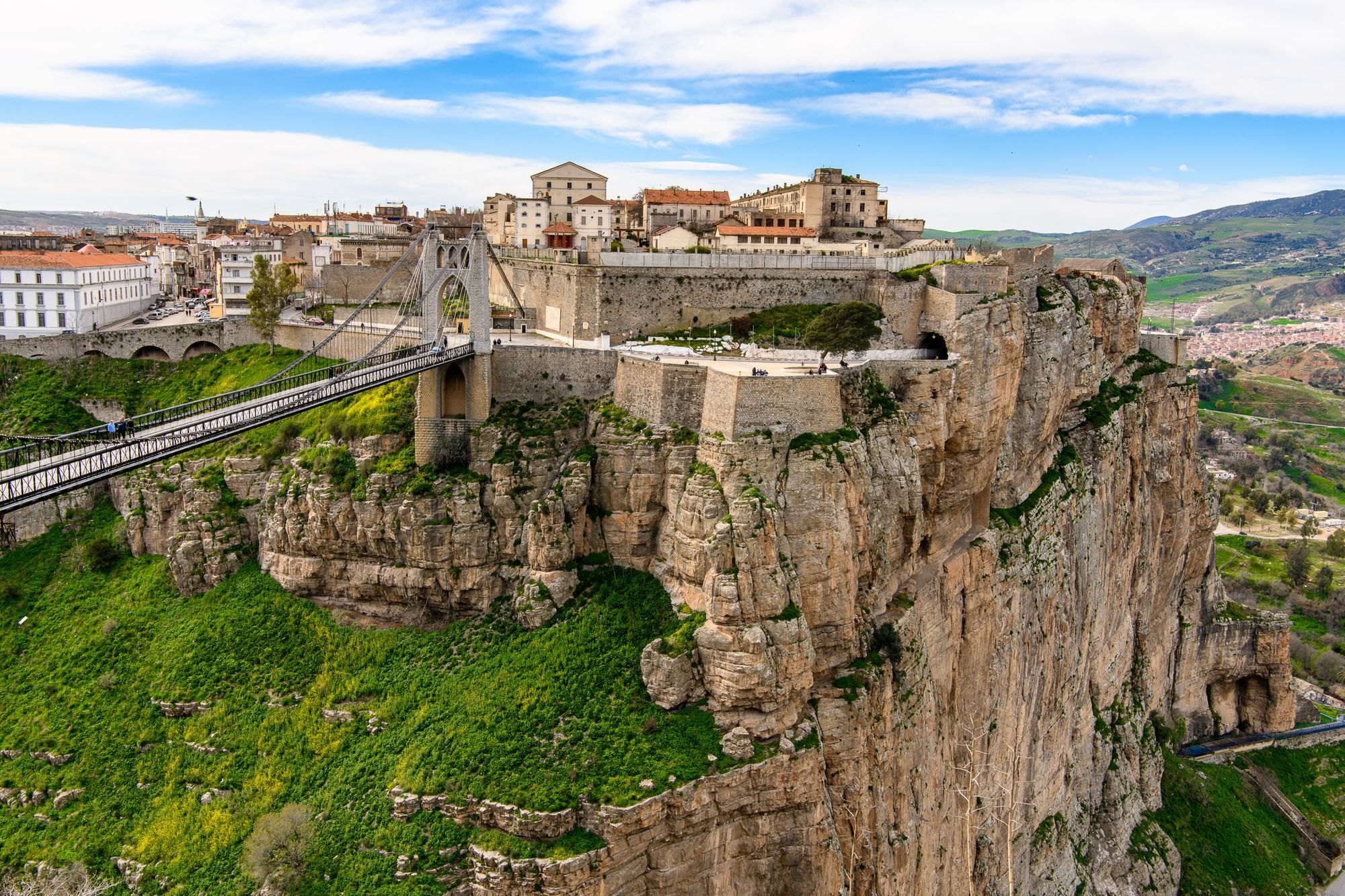
Markets of Tunis
Upon arrival in Tunisia, Ibn Battuta slept in madrasas and sufi homes. The Souks of Tunis were cultural arenas for goods from all over Africa. Ibn Battuta would have caught the glimmer of sub-Saharan gold, ivory and ostrich feathers and the aromas of olive oil and genuine leather would have filled the air.
In the bustling Medina of Tunis, visit the timeless souk that encircles Al-Zaytuna Mosque.
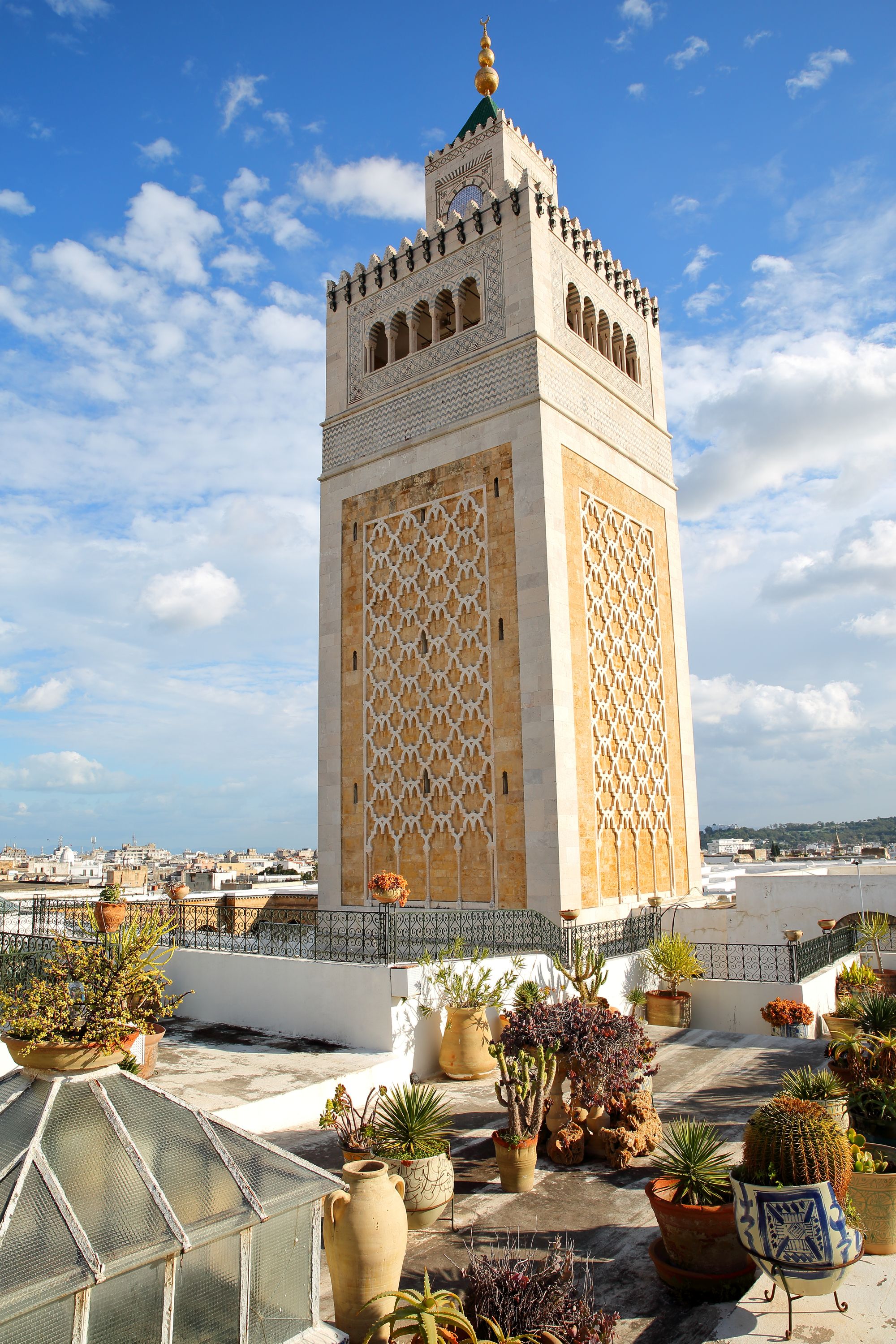
Egypt
Alexandria
In 1326, after crossing Libya, Ibn Battuta desired to visit Cairo, one of the biggest cities of its time. Following the Mediterranean coastline, he arrived in Alexandria, the old "Bread Basket" of the Roman Empire. His accounts describe Pompey’s Pillar and an archer who climbed to its highest point with a rope. He spent weeks around the Port of Alexandria with a vantage view of the dilapidated Pharos Lighthouse, one of the 7 Wonders of the Ancient World. He would later claim Alexandria was one of the top 5 most magnificent places in all his travels.

Although Ibn Battuta would not have seen the Library of Alexandria, filled to the brim with an estimated 40,000 to 400,000 academic Greek codices and papyrus, its intellectual history would have already been felt in the city at the time. Today, the modern Bibliotheca Alexandrina is devoted to cultural dissemination, erudition and literary greatness. It houses shelf-space for more than 8 million books as well as a planetarium, permanent and rotating exhibitions, museums and art galleries.
Cairo
Ibn Battuta described Cairo as
“mother of cities ... mistress of broad provinces and fruitful lands, boundless in a multitude of buildings, peerless in beauty and splendour, the meeting-place of comer and goer, the stopping-place of feeble and strong”.
Streets of Cairo
Cairo to this day is a pulsating city, with camels, donkeys, stalls lining the streets and endless vendors selling you all you could need. Ibn Battuta remarked on the competitive practice of the rich, funding and building alms-houses, hospitals and colleges.
Mosques of Cairo
Ibn Battuta visited Cairo when it was controlled by the Mamluks, the slave warriors who had risen and defeated the Ayabbid’s (Salahuddin’s legacy). Mamluk architecture is an intrinsic part of Cairo’s character. Ibn Tulun Mosque, Emir Qurqmas Complex and the Qalawun complex were prominent structures present in Ibn Battuta’s time.

From a distance, Ibn Battuta spied the Pyramids of Giza and he was lucky to see Al-Azhar Mosque when it had regained its scholarly and spiritual importance.
The Levant and the Arabian Peninsula
Travelling along the official road of the Mamluks to Damascus, Ibn Battuta ventured forth into the Holy Lands.
Hebron and Jerusalem
In Hebron, Ibn Battuta visited the Ibrahim Mosque (The Cave of the Patriarchs). Now under Israeli control, he would have witnessed the newly built Al-Jawali Mosque in the Ibrahimi complex. In Jerusalem, he revelled in the marvellous beauty and spiritual importance of the Dome of the Rock and the sacred complex of Al-Aqsa.
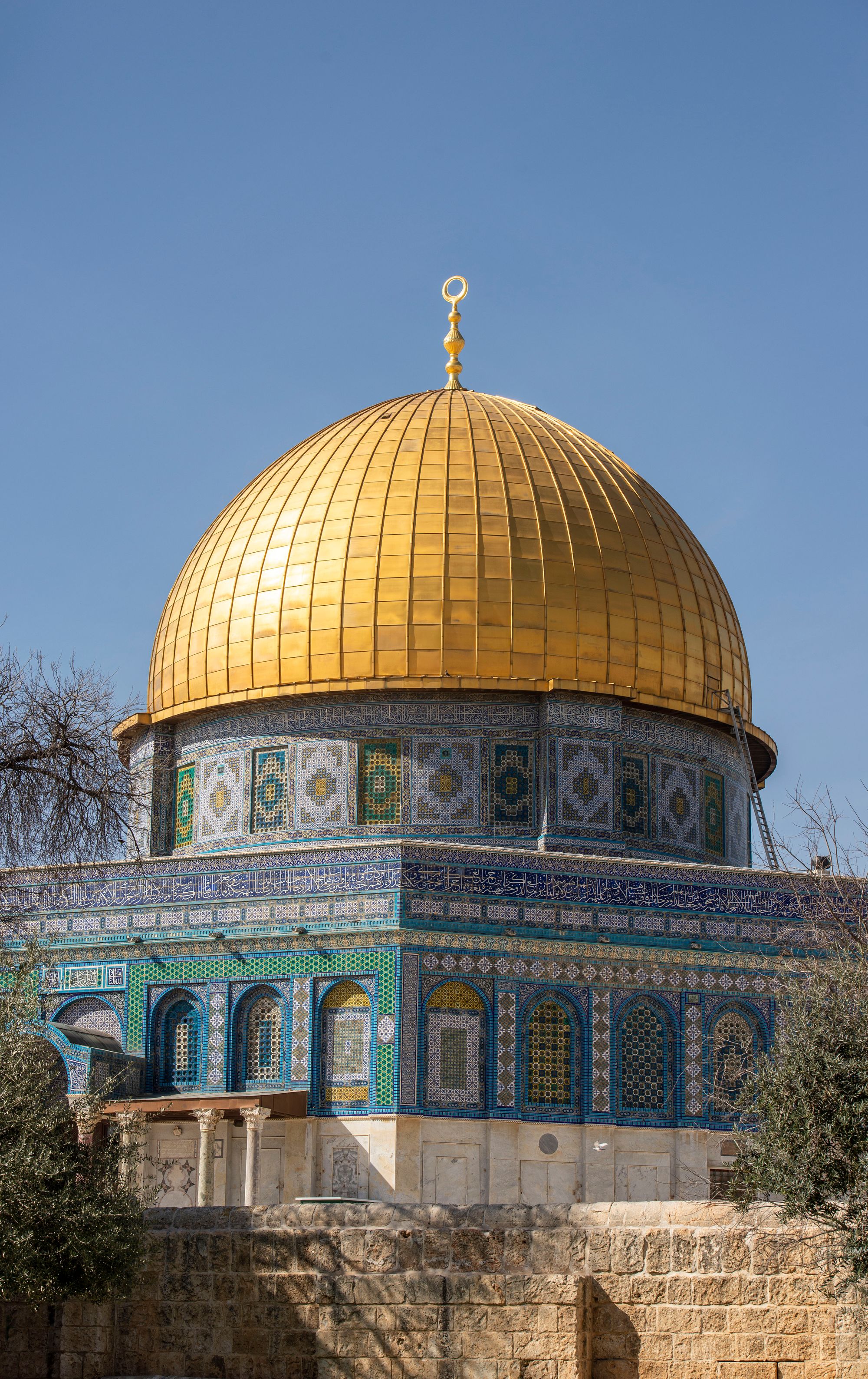
Damascus
Ibn Battuta was enamoured by the city of Damascus:
“She hath adorned herself with flowers of sweet-scented herbs and displayed herself in brocaded vestures from her gardens... Her soil is sated with abundant water”
He wrote that the Great Mosque of Damascus was the greatest mosque on earth.
Madinah and Makkah
Ibn Battuta travelled to Madinah in a Hajj caravan, with thousands of others. Upon arrival, he stayed in Madinah for 4 days and slept in mosques surrounded by the murmur of worship. After over a year of travels, Ibn Battuta completed his religious duty in Makkah but returning home was no longer an option. The taste of travel spurred him on to discover more of the world.
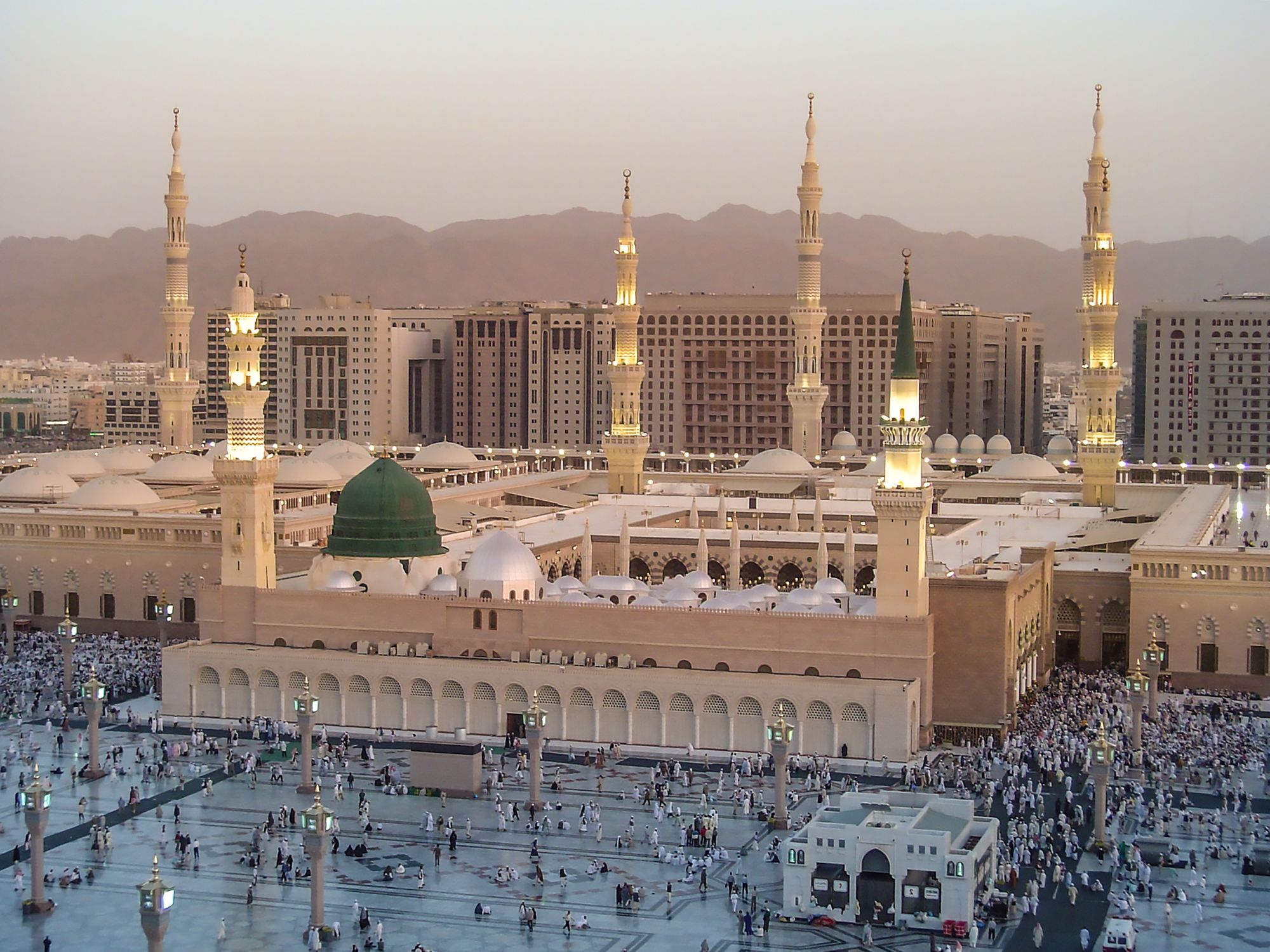
Mesopotamia and Persia
Iraq and Iran
Ibn Battuta set off into the uncharted territory of the Ilkhanate, an extension of the Mongol Empire. In Al-Najaf, Iraq, he paid his respects at the Imam Ali Shrine and ventured forth to Basra, a city of intertwining Arab and Persian legacies. He then wrote of Shiraz’s “bazaars, fruit gardens and rivers”, praying in the Jameh Mosque of Atigh and wandering through the Vakil Bazaar.
Ibn Battuta, ventured on to Baghdad, the ghost seat of the Abbasids, a city ravaged by the Mongol Invasion of 1258. After paying homage to the city and passing by Al-Mustansiriya University and the elaborate Bathhouses, he continued onwards to Tabriz in Iran (now part of Azerbaijan).
Tabriz was an important trading centre of the Silk Road that welcomed travellers from Europe, the Steppes, Arabia and China. He records encamping in a place called ash-Sham, possibly the tomb of Shams Tabrizi, the mentor of Rumi.
Ibn Battuta returned to Makkah. After one year, he followed the much taken migratory route of the Red Sea to East Africa.
East Africa
The Red Sea and the Horn of Africa
He arrived in Aden, Yemen, a bustling city resplendent with coastal wealth. The city was a melting pot of cultures: Chinese pottery, Bantu ivory, Indian silks and much more. Riding the waves of Monsoon winds, he then visited Zeila in Ethiopia, Mogadishu in Somalia, Mombasa in Kenya and the Swahili coast and Kilwa in Tanzania. He was impressed by the ingenious indoor plumbing and the remarkable living conditions. Although in ruins now, Ibn Battuta witnessed the glory of the Great Mosque of Kilwa.
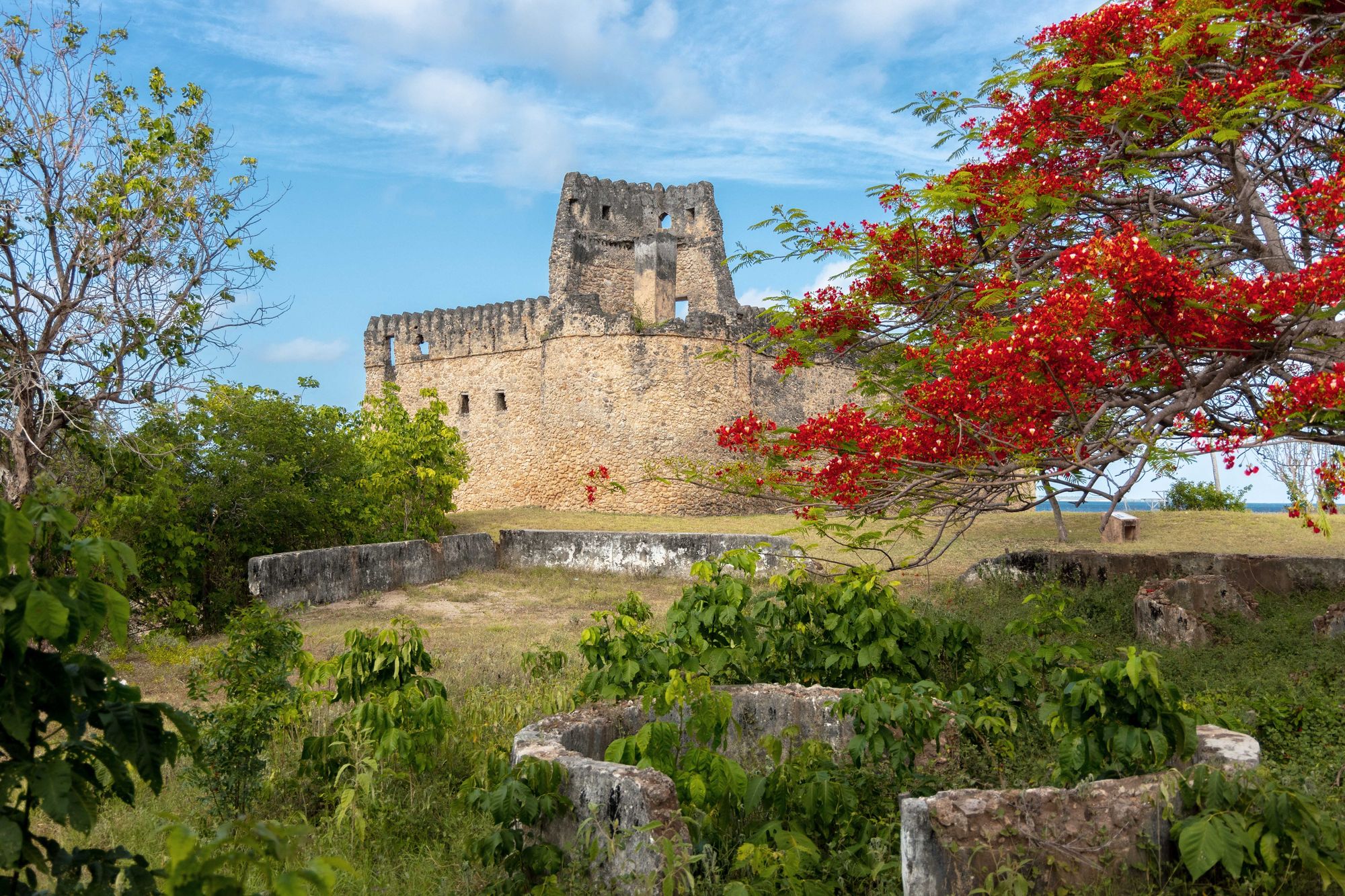
After touring East Africa, Ibn Battuta returned to Makkah for a third time, his favourite replenishing point.
Türkiye
Anatolia
Ibn Battuta visited the eastern side of Türkiye, overwhelmed by the generosity and hospitality of the Turks. In Alanya he was a visitor to the Alanya Citadel calling it “a magnificent and formidable citadel”. He travelled throughout Anatolia and was impressed by the religious and cultural diversity and infrastructure of the cities. He was continuously intrigued by Sufism and made a spiritual trip to Konya, to visit the Shrine of Rumi.
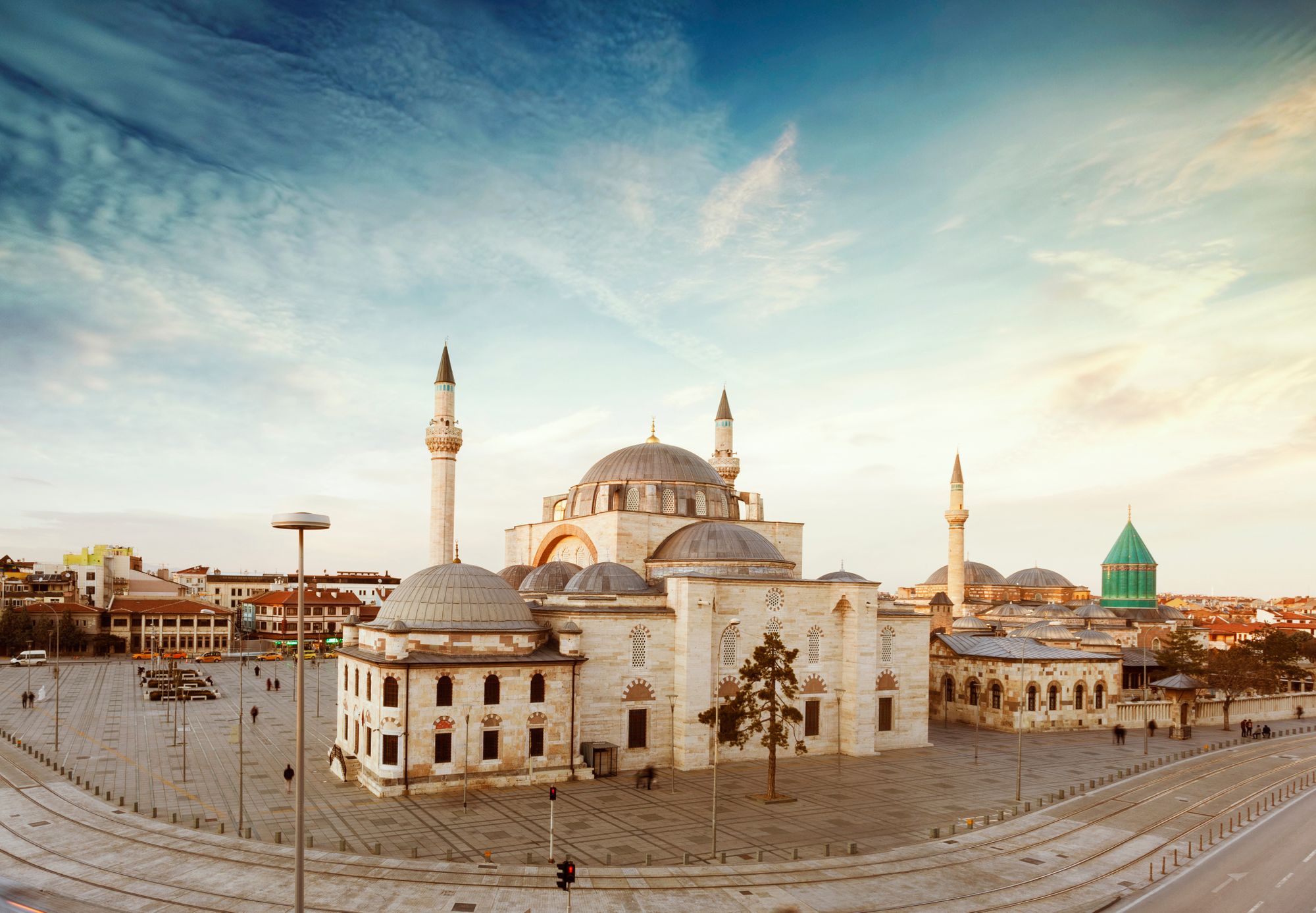
Russian Steppes
After an intriguing turn of events, Ibn Battuta found himself under the care of the Khanate of the Golden Horde, one of the four divided legacies of Genghis Khan with territories expanding across the Russian steppes.
Constantinople (modern-day Istanbul)
Ibn Battuta joined the royal caravan in which the daughter of the King of the Byzantine Empire, who was also the pregnant wife of Ozbek Khan (then Khan of the Golden Horn), travelled back to Constantinople. He joined this caravan with great excitement as it was his first time leaving Dar-al-Salam (recognised Islamic lands). Constantinople was a Christian Roman city, different from the Istanbul of today, with eclectic Byzantine architecture similar to the elaborate Hagia Sophia.
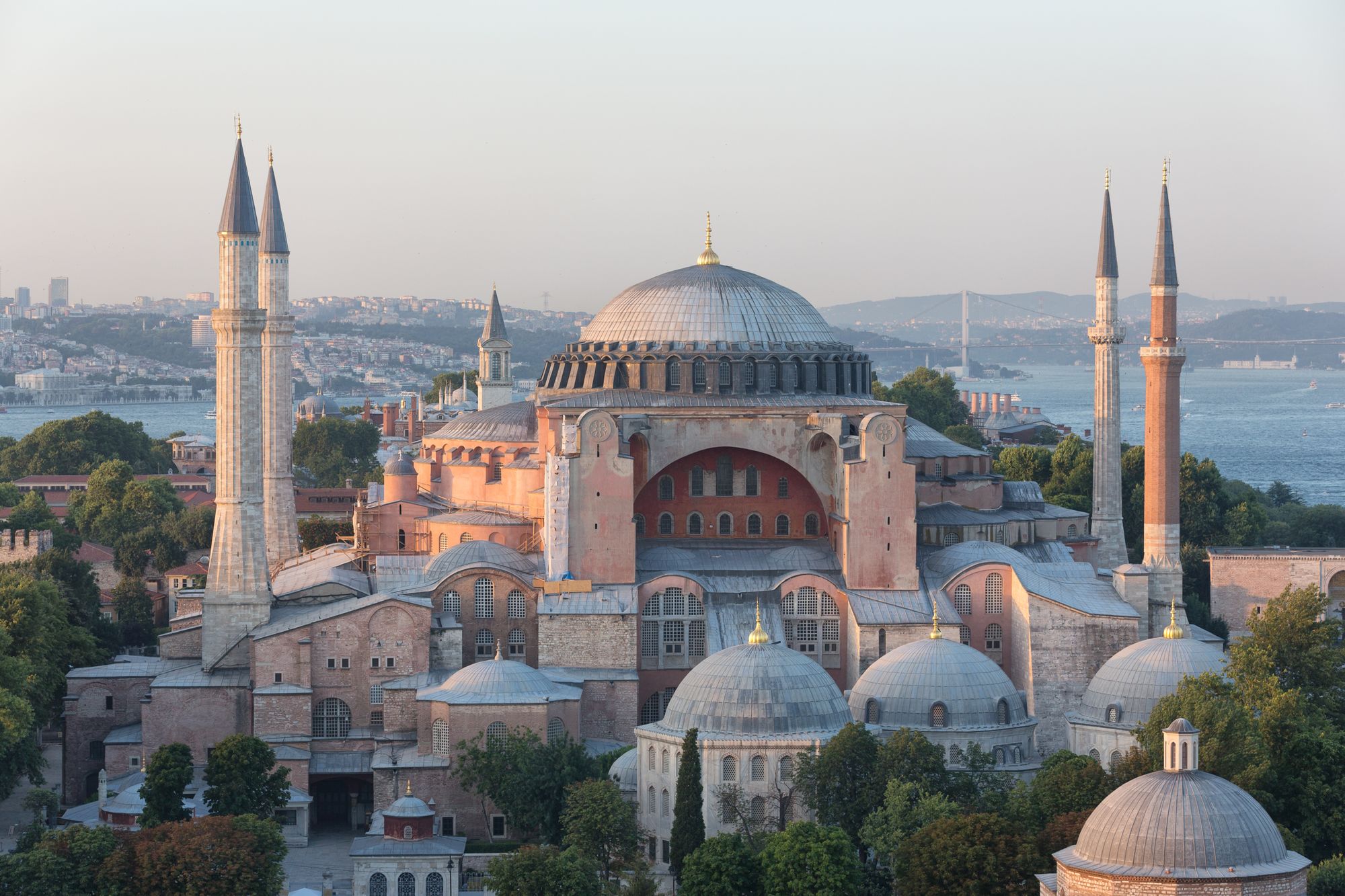
South Asia
India, Pakistan and Bangladesh
Upon leaving Constantinople, Ibn Battuta made it his mission to go to India, where he had heard of a Sultan whose generosity to Muslims was unsurpassed. He travelled through both familiar and unfamiliar territories eventually passing through mountains into Afghanistan arriving in India, modern-day Pakistan, historians suspect Peshawar. He visited the Shrine of Baba Farid in Pakpattan, a 13th-century Sufi shrine.
After much trial and tribulation, he was welcomed in India with open arms and huge sums of gold where he became a Qadi, a Judge for the Sultan Muhammad Tughluq's. During his six years as a judge, he was trapped in a court of intrigue, with a murderous Sultan. In an attempt to escape without risking his life, he asked to complete a fourth Hajj, but the Sultan rejected the request. Instead he made Ibn Battuta an ambassador to the Mongol court of China. On his journey to China, Ibn Battuta was robbed, kidnapped, experienced storms, saw his ships sink and lost everything.
Sri Lanka, Maldives and Bangladesh
Through God’s mercy and many years of travel experience Ibn Battuta was able to turn his fortunes around, he visited the Maldives, where he married into the newly converted Muslim royal family and became a judge. In 9 months he tried to reform the island but departed for Sri Lanka after being caught up in political turmoil. He visited the sacred mountain of Sri Pada (Adam's Peak), a religious site for Muslims, as it was believed Prophet Adam (AS) had been sent down from heaven on this mountain.

His travelogue also talks of his visit to the Tenavaram temple, a historic Hindu temple.
China
Ibn Battuta experienced the greatest culture in China. He was unused to that culture and his loyalty to his identity often made him look down on the Chinese pagan beliefs. Ibn Battuta’s records are vague in China but he arrived in Quanzhou, visited Guangzhou, complimented Hangzhou’s size and travelled to Beijing.
Spain
Al-Andalusia
Ibn Battuta travelled to Gibraltar as a soldier to fight against the Castile family. However once the danger had subsided he could not resist the urge to travel into the lands of Al-Andalus. He visited Malaga, marvelling at the Valencian orange gardens, the countless mosques, baths and palaces. He passed through Alhama, derived from the Arabic word for thermal baths for the town’s hot springs. In Granada, he marvelled at the Red Fort, Alhambra Palace and the beauty of the Court of the Lions.
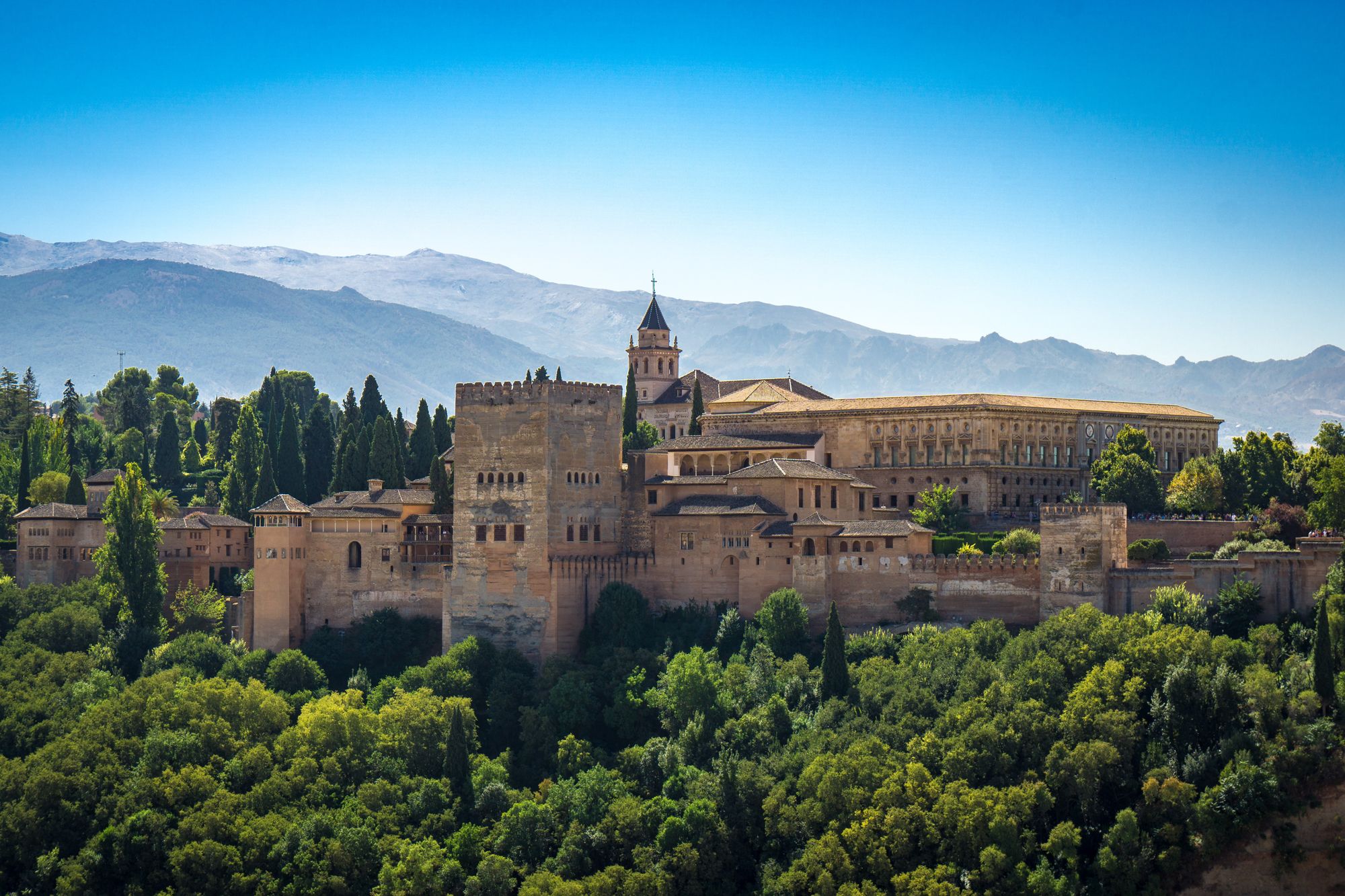
Mali
Ibn Battuta travelled south of his country of origin into the Sahara desert, passing desolate desert towns of Taghaza and Walata. He was grateful for the hospitality offered in West Africa. He followed the Niger River where he stayed in the court of Mansa Suleyman, the brother of the deceased Mansa Musa. Ibn Battuta witnessed the Djinguereber Mosque in Timbuktu but his Rihla showed him to be impartial to this region of Dar as-Salaam.
Upon his return from sub-Saharan Africa, Ibn Battuta’s travels gifted him prestige and status, he took a position as a jurist. Ibn Battuta was not a writer, but he understood the value of commemorating the experiences and journey’s he had lived through. He dictated his past to a scribe with memory, imagination and by supplementing facts from other sources.
Historians claim Ibn Battuta could have invented a lot of his Rihla. In 1369, he died in Marrakech, leaving behind a legacy of fact and fiction that still resonates world wide.
Wherever you choose to visit, you are sure to find a halal-friendly hotel, villa or apartment on halalbooking.com which will allow you to create your own travel memories - who knows, you may even decide to write about them for yourself.
